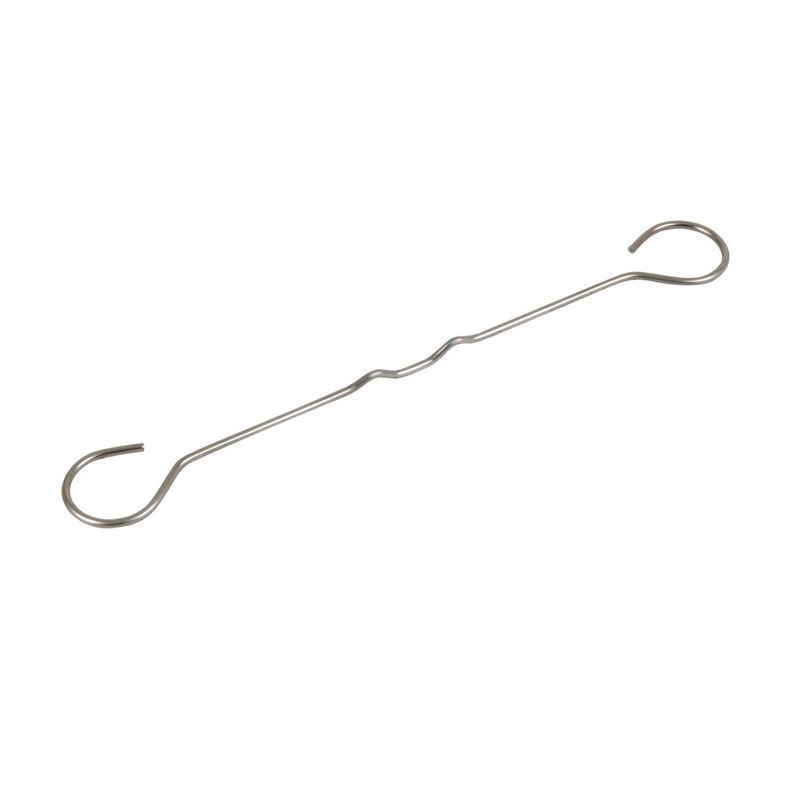
- Mobile Phone
- +8613931874955
- sales@cntcmetal.com
spiral torsion spring
Understanding Spiral Torsion Springs An Overview
Spiral torsion springs are a type of mechanical spring that plays a vital role in various applications across numerous industries. Unlike traditional coil springs, which primarily store energy through linear compression or extension, spiral torsion springs operate by twisting around a central axis. This unique characteristic allows them to provide torque and rotational force, making them essential components in many devices.
What Are Spiral Torsion Springs?
A spiral torsion spring is designed as a helical coil with a specific geometric configuration, allowing it to store energy in the form of twisting. These springs typically consist of a strip of metal coiled into a spiral shape, with its ends fixed to a frame or an object. As the coil is twisted, it generates torque that can be utilized to perform work. The energy stored in the spring is released when the twist is removed, making it a crucial element in systems requiring rotational movement.
Applications of Spiral Torsion Springs
Spiral torsion springs find applications in a wide range of devices, illustrating their versatility and importance. Common uses include
1. Clocks and Watches One of the earliest and most prominent applications of torsion springs can be found in mechanical clocks and watches. The spring provides the necessary energy to drive the movement of hands, allowing for timekeeping.
2. Automotive Systems In vehicles, spiral torsion springs are employed in various components such as automatic seatbelts, windshield wipers, and door mechanisms. Their ability to provide consistent torque ensures the reliability and functionality of these systems.
3. Toys Mechanical toys often utilize spiral torsion springs for movements, such as wind-up mechanisms that power the toy's operation. These springs offer a simple yet effective way to convert stored energy into motion.
spiral torsion spring

4. Office Equipment Devices like staplers and hole punchers commonly incorporate spiral torsion springs to facilitate their mechanisms. The spring ensures that the device performs as intended, maintaining a user-friendly experience.
5. Industrial Machinery In industrial settings, spiral torsion springs can be found in various machines to provide resistance, maintain tension, and contribute to the precision of operations. Their adaptability makes them suitable for numerous applications in manufacturing.
Advantages of Spiral Torsion Springs
One of the significant advantages of spiral torsion springs is their compact design, which allows for energy storage in a small space while providing substantial torque. This efficiency is particularly beneficial in applications where the available space is limited. Additionally, spiral torsion springs are capable of withstanding repetitive loads without significant fatigue, contributing to the longevity and durability of products they are integrated into.
Material Considerations
Spiral torsion springs are typically made from high-carbon steel, stainless steel, or other alloys that offer strength and flexibility. The choice of material is crucial, as it affects the spring's performance, resistance to deformation, and ability to withstand environmental factors such as corrosion and temperature changes.
Conclusion
In conclusion, spiral torsion springs represent an essential component in mechanical engineering and design. Their ability to store and release rotational energy makes them invaluable across various applications, from everyday household items to complex industrial machinery. Understanding their mechanics and applications can lead to more effective designs and improved performance in countless devices. As technology advances, the role of spiral torsion springs in innovation and engineering continues to grow, ensuring their relevance in modern manufacturing and product design.
share:
-
Why Sacrificial Formwork Is Redefining Underground ConstructionNewsJun.06,2025
-
The Structural Dynamics of Modern Concrete: How Snake Spacers Revolutionize Flexible ReinforcementNewsJun.06,2025
-
Snake Spacers Smart-Lock Concrete Reinforcement with Surgical PrecisionNewsJun.06,2025
-
Snake Spacers: Reinforcement Precision for Modern Concrete ProjectsNewsJun.06,2025
-
Snake Spacers Powering Concrete's Structural DNANewsJun.06,2025
-
Slither into Success: Snake Spacers' Precision Bite for Unbreakable ReinforcementNewsJun.06,2025
-
Sacrificial Formwork: Building Stronger, Faster, and Safer StructuresNewsJun.06,2025



















